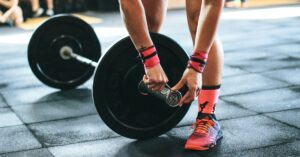Technological Advances in Athlete Performance Measurement

Technological Advances in Athlete Performance Measurement
Introduction
In the realm of sports, the quest for peak performance is unending. Athletes and coaches are constantly seeking ways to gain a competitive edge, and technological advancements have become pivotal in achieving this goal. One area where technology has made profound impacts is in athlete performance measurement. From precision tracking of movements to real-time biometric analysis, innovations in this field have revolutionized how athletes train, compete, and recover.
Tracking and Analysis Technologies
1. Wearable Sensors
Wearable sensors have emerged as a game-changer in athlete performance measurement. These devices, typically worn on the body or integrated into sports equipment, capture a wealth of data including movement patterns, acceleration, deceleration, and even biometric indicators like heart rate and oxygen levels. For example, devices like Catapult Sports’ GPS trackers and accelerometers provide coaches with detailed insights into an athlete’s workload and movement efficiency during training sessions and games.
2. Video Analysis Software
Video analysis software has evolved from basic playback tools to sophisticated systems that enable coaches to dissect every aspect of an athlete’s performance. High-speed cameras coupled with AI-powered algorithms can track and analyze movements with exceptional precision. This technology is widely used in sports like tennis and golf for stroke analysis and in team sports for tactical assessments.
3. Biometric Monitoring
Biometric monitoring systems use wearable or non-invasive sensors to collect real-time physiological data. These systems measure parameters such as heart rate variability, blood lactate levels, and even muscle oxygen saturation. Such data helps coaches tailor training programs to optimize performance and prevent overtraining or injury. For instance, Hexoskin’s smart shirts monitor vital signs during strenuous activities, offering actionable insights into an athlete’s physical condition.
Data Integration and Analytics
1. Cloud-Based Platforms
Cloud computing has facilitated the aggregation and analysis of vast amounts of performance data. Athlete management platforms like PlayerMaker and Coach Logic centralize data from various sources, allowing coaches and sports scientists to create comprehensive profiles of individual athletes or entire teams. This integration enables informed decision-making based on data-driven insights.
2. Machine Learning and Predictive Analytics
Machine learning algorithms are transforming how performance data is interpreted. By analyzing historical data and real-time inputs, these algorithms can predict injury risks, suggest optimal training regimens, and identify areas for improvement. For example, Kitman Labs employs machine learning to predict when athletes are at risk of injury based on their training loads and physiological markers, helping teams proactively manage player health.
Case Studies and Examples
1. NFL’s Use of Next-Gen Stats
The National Football League (NFL) utilizes Next-Gen Stats, powered by Zebra Technologies, to track player movements and performance metrics during games. This data is used to enhance broadcasting, provide insights for coaches, and fuel analytics-driven strategies.
2. Track and Field: Advances in Biomechanical Analysis
In track and field, advancements in biomechanical analysis using high-speed cameras and motion capture technology have revolutionized training techniques. Coaches can analyze sprinters’ running mechanics frame-by-frame to optimize technique and maximize speed.
Future Directions
The future of athlete performance measurement is poised to further integrate cutting-edge technologies. Advancements in AI, augmented reality (AR), and wearable tech are expected to enhance real-time feedback and immersive training experiences. Furthermore, ethical considerations regarding data privacy and the equitable access to technology in sports remain critical topics for exploration.
Conclusion
Technological advances in athlete performance measurement continue to redefine the boundaries of human potential in sports. From wearable sensors that track every move to AI-powered analytics that predict performance outcomes, the marriage of sports and technology is creating unprecedented opportunities for athletes, coaches, and sports scientists alike. As these technologies evolve, so too does the pursuit of athletic excellence, ensuring that tomorrow’s champions are equipped with the tools to push boundaries further than ever before.







